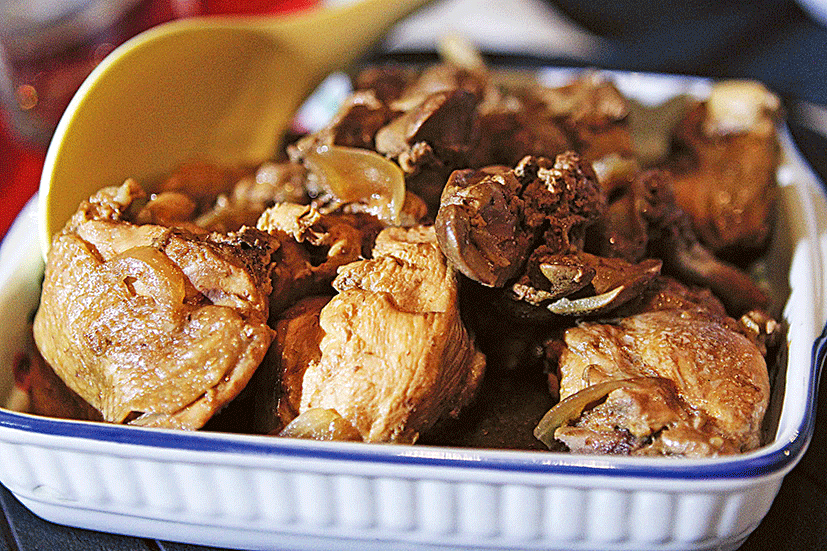
On a week-long trip to the Philippines, what does a curry lover eat? As anyone who’s lived in the Gulf for a significant length of time might tell you, Filipino food smells, is bland and doesn’t extend beyond adobo. Next time, hit those people on the head: as I discovered, many Filipinos love spicy food, they leave stinky fish to overseas expats and don’t all believe adobo should be the country’s national dish.
Every day I eat something different and every day I’m introduced to something new. There’s plenty of seafood, mostly grilled or fried, but always fresh and served alongside the ubiquitous bowl of rice and a bunch of sauces you can mix yourself at the table.
Soup it
For a tropical nation, there’s a surprising amount of steaming soup, but then as one of our guides explains, that’s because the body cools down as it sweats out the heat.
The most well known of these is sinigang, a sour meat and vegetable soup appearing in different forms across the length and breadth of the archipelago, depending on tastes, seasons and budgets. “Sinigang is a strong rival for the title of national dish because it’s so versatile,” chef Robert Bolanos, Director of Culinary Operations at the Fairmont Makati, told me on my first day. He believes the country is far too culturally diverse to be represented by a single plate — even though adobo is eaten all across the country. Meat stewed in vinegar with garlic, soy sauce and black peppercorns, this Spanish-influenced classic is often the single dish non-Filipinos have heard of. Chicken, beef, pork, crocodile — I tried them all adobo-style, in different regions with different spices, then did the same for sinigang. I can see why the Filipinos have such a hard time deciding.
But adventurous foodies come to the Philippines in search of the cuisine’s hidden gems. Sisig, a sizzling platter of pork head and organ meats, is the tamest of a category of oddities that also includes isaw, barbecued chicken or pig intestines, and balut, a fertilised duck or chicken egg with a nearly developed embryo.
I was introduced to sisig in the early hours of the morning, after a night out at Manila’s underground clubs. Like haggis, the meat cannot be identified for what it once was, since it’s chopped beyond recognition, then boiled, broiled and grilled with onions and spices. The weirdest variation I ate featured crocodile as the star ingredient and was set in front of me in the diving paradise of Palawan; the most luxurious version was a sisig pizza at the Fairmont in Manila. I took to it immediately and was delighted to find chicken variations on supermarket shelves in Dubai.
Balut is a whole other story. Everyone I met told me it’s easy to find on street corners, but I didn’t come across it — although I daresay I should have tried harder. It sounds like the sort of thing I’d want to eat with an aperitif, but the idea of having to chew on partially developed foetal bones didn’t exactly fill me with enthusiasm — even if they are served with spicy vinegar. I took a passive approach instead: if I bumped into a seller, I’d try it — sadly, I was out of luck.
That was the week of a national shortage, I told myself — perhaps the country had run out trying to set a Guinness World Record for the largest serving of balut adobo ever. Pateros, a small municipality known as the balut capital, set just such a record in April, serving up 117.5 kilos of duck embryos, or about 1,000 eggs. People ate boodle-style, with their fingers, picking the food off shared banana leaves. “Balut has a lot of calcium, is nutritious, has protein, and can strengthen the knees,” Pateros Mayor Joey Medina told Reuters ahead of the record attempt.
My knees are fine, so I asked about other local classics. I was told about fried chicken or Filipino spaghetti, both culinary legacies of the American occupation, which I couldn’t eat because of a gluten intolerance. Croc-adobo suited me just fine that evening.
Seafood it is
It was the next day, part way through the week and midway through the tenth fish dish I’d eaten in three days, that I realised the country’s national dish really is grilled seafood — squid, prawns, fish of all textures. Each of the 7,007 islands — or at least the inhabited ones — has its own local favourite, and as in any coastal community, it’s all cooked and eaten within minutes of being caught, before it’s had a chance to pong.
If you live in Dubai, you’ve got to buy the dried variation at West Zone Supermarket instead. If only they’d sell some of those dried chillies too.








